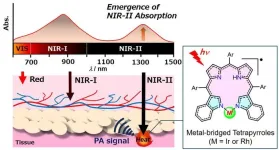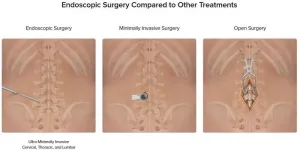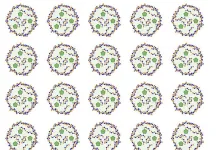(Press-News.org) LOS ANGELES—January 25, 2025 New research presented at the 2025 Society of Thoracic Surgeons (STS) Annual Meeting reveals that anatomic lung resections, such as lobectomy and segmentectomy, are associated with improved long-term survival compared to wedge resection for patients with early-stage non-small cell lung cancer (NSCLC).
The study analyzed outcomes for more than 32,000 stage 1A NSCLC patients using data from the STS General Thoracic Surgery Database (STS GTSD) with long-term follow-up linked to the National Death Index and Centers for Medicare and Medicaid Services database, which provides up to 10 years of survival data.
Lobectomy for stage 1A NSCLC offered the highest survival rates, with a 5-year overall survival (OS) of 71.9% and 10-year OS of 44.8%. Segmentectomy, which resulted in a 5-year OS of 69.6% and 10-year OS of 44.2% proved to be a viable alternative. Both lobectomy and segmentectomy demonstrated better outcomes than wedge resection, which had 5-year OS of 66.3% and 10-year OS of 41.4%.
This research highlights the profound effect of using real-world data to provide critical insights that complement findings from randomized controlled trials (RCTs). While RCTs suggest an equivalence between lobectomy and sub-lobar resections, this real-world study gives clinicians additional insight. It provides a broader perspective applicable to diverse patient populations and healthcare settings.
“This study reinforces the need for nuanced decision-making, integrating both RCTs and real-world data to deliver the highest quality of care,” said Christopher Seder, MD, a thoracic surgeon at Rush University Medical Center, Chicago. “By analyzing outcomes in a variety of healthcare settings, we can offer informed recommendations, ultimately improving patient outcomes across the board.”
The findings come at a pivotal time when cardiothoracic surgical practices are evolving rapidly, integrating innovative tools and approaches that prioritize patient safety and long-term health. Dr. Seder added, “This research is a significant step forward in understanding the long-term implications of surgical choices for lung cancer patients. Using real-world data to complement RCT findings offers surgeons additional context for tailoring treatment strategies.”
The STS GTSD, part of the STS National Database, includes a majority of lung cancer and esophageal cancer surgeries performed in the US. It is a true national benchmark, capturing detailed information on patient characteristics, surgical procedures, and outcomes. This study highlights the value of large-scale, real-world data analysis in informing clinical practice and guiding patient care.
A copy of the abstract is available to media upon request.
About STS
Founded in 1964, The Society of Thoracic Surgeons is a not-for-profit organization representing more than 7,800 cardiothoracic surgeons, researchers, and allied healthcare professionals worldwide who are dedicated to ensuring the best possible outcomes for surgeries of the heart, lung, and esophagus, as well as other surgical procedures within the chest. The Society’s mission is to enhance the ability of cardiothoracic surgeons to provide the highest quality patient care through education, research, and advocacy.
END
Anatomic lung resection linked to improved survival for early-stage lung cancer
2025-01-25
ELSE PRESS RELEASES FROM THIS DATE:
Combination of dual-targeted therapies and chemotherapy shows high response rates in BRAF-mutated metastatic colorectal cancer
2025-01-25
SAN FRANCISCO – Patients with metastatic colorectal cancer (mCRC) harboring BRAF V600E mutations benefitted from first-line treatment with the targeted therapies encorafenib and cetuximab plus a mFOLFOX6 chemotherapy regimen, according to results from the Phase III BREAKWATER trial led by researchers at The University of Texas MD Anderson Cancer Center.
The findings, presented today at the American Society of Clinical Oncology Gastrointestinal Cancers (ASCO GI) Annual Symposium and published in Nature Medicine, demonstrated a 60.9% overall response rate (ORR) with the three-drug combination ...
Blood test could guide use of anti-inflammatory drug celecoxib to reduce risk of colon cancer recurrence
2025-01-25
Boston – A data analysis from a randomized clinical trial for stage 3 colon cancer patients by investigators at Dana-Farber Brigham Cancer Center found that patients with evidence of residual cancer in their blood after surgery to remove the cancer, may benefit from adding of celecoxib, to post surgery treatment. The analysis showed that patients with positive blood tests for circulating tumor DNA (ctDNA) had worse outcomes in general, but those who were treated with celecoxib, a non-steroidal anti-inflammatory drug, experienced significantly improved disease-free survival.
“This is one of the first studies to show that ctDNA status has predictive utility in terms of selecting ...
Blood test from Alliance trial guides use of anti-inflammatory drug to lower colon cancer recurrence risk
2025-01-25
The Alliance for Clinical Trials in Oncology today announced the results of a data analysis from a randomized phase III clinical trial involving patients with stage III colon cancer, which found that adding the drug celecoxib to treatment after surgery might help those who still have traces of cancer in their blood. The analysis showed that patients with signs of cancer in their blood measured by Signatera™, a circulating tumor DNA (ctDNA) test, tended to have worse outcomes. However, those who took celecoxib after surgery had a much better chance of staying cancer-free. These results are being presented in a late-breaking ...
New dyes pave way for better photothermal cancer treatment and diagnosis
2025-01-25
Tokyo, Japan – Researchers from Tokyo Metropolitan University have developed a new dye that can strongly absorb second near-IR radiation and transform it to heat. Starting with a dye from the bile pigment family, they designed a unique ring structure which can bind rhodium and iridium. Measurements and modeling revealed strong second near-IR absorptions and exceptional photostability. Second near-IR waves easily penetrate human tissue; the new dye may be applied in deep tissue therapies and imaging.
The second near-IR region of the electromagnetic spectrum (1000-1700 nanometers) ...
New drug shows promise in restoring vision for people with nerve damage
2025-01-25
Researchers at the University of Colorado Anschutz Medical Campus have found a promising drug candidate that could help restore vision in individuals with multiple sclerosis (MS) and other neurological conditions that damage neurons.
The study was published this week in the journal Nature Communications.
The drug, LL-341070, enhances the brain's ability to repair damaged myelin— the protective sheath around nerve fibers. Damage to myelin is a hallmark of diseases like MS, as well as a natural consequence of aging, often resulting in vision loss, loss of motor skills, ...
Scientists discover unique microbes in Amazonian peatlands that could influence climate change
2025-01-24
Complex organisms, thousands of times smaller than a grain of sand, can shape massive ecosystems and influence the fate of Earth's climate, according to a new study.
Researchers from Arizona State University, along with their colleagues from the National University of the Peruvian Amazon, have identified an unknown family of microbes uniquely adapted to the waterlogged, low-oxygen conditions of tropical peatlands in Peru’s northwestern Amazonian rainforest.
The new research shows these microbes have a dual role in the carbon cycle and the potential to either ...
University Hospitals now offering ultra-minimally invasive endoscopic spine surgery for patients experiencing back pain
2025-01-24
CLEVELAND – University Hospitals is now offering endoscopic spine surgery for patients needing treatment for back pain due to herniated discs in their spine. Xiaofei (Sophie) Zhou, MD, completed Arthrex's Endoscopic Spine Training course to bring this advanced procedure to the health system and recently completed the first endoscopic discectomy utilizing Arthrex technology at UH. The health system is the only one in the greater Cleveland area offering this type of ultra-minimally invasive surgery.
Arthrex's technology allows surgeons to remove the ...
JNM publishes procedure standard/practice guideline for fibroblast activation protein PET
2025-01-24
Reston, VA (January 24, 2025)—The Society of Nuclear Medicine and Molecular Imaging (SNMMI) and the European Association of Nuclear Medicine (EANM) have issued a new procedure standard/practice guideline for the use of fibroblast activation protein (FAP) PET. Published in the January issue of The Journal of Nuclear Medicine, the procedure standard/practice guideline was developed to assist providers in recommending and performing FAP PET, as well as interpreting and reporting results of the imaging studies.
FAP is a transmembrane protein expressed on both cancer-associated fibroblasts and on normal activated fibroblasts involved in wound healing and ...
What to do with aging solar panels?
2025-01-24
The National Science Foundation Convergence Accelerator Program has granted $5 million dollars to Phase 2 of the project “Securing critical material supply chains by enabling phOtovoltaic circuLARity (SOLAR).”
SOLAR’s goal is to proactively ensure circularity of solar panels by providing solutions to barriers throughout the end-to-end supply chain. The intent is to make solar panels recyclable and find a solution to remanufacturing them at a competitive cost. Achieving this will help promote a clean and resilient energy system in the United States.
The three-year project is led by Battelle Memorial Institute ...
Scientists design peptides to enhance drug efficacy
2025-01-24
NEW YORK, NY, January 24, 2025 — A team of scientists has developed a groundbreaking approach using specially designed peptides to improve drug formulations. This innovative method significantly enhances anti-tumor efficacy, as demonstrated in leukemia models. The study, published in the journal Chem, was led by researchers at the Advanced Science Research Center at the CUNY Graduate Center (CUNY ASRC) and Memorial Sloan Kettering Cancer Center.
Drug delivery systems often face two critical challenges: poor solubility and inefficient delivery within the body. Many drugs do not dissolve well, making it difficult for them to reach ...





